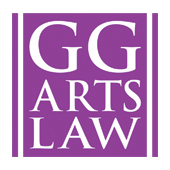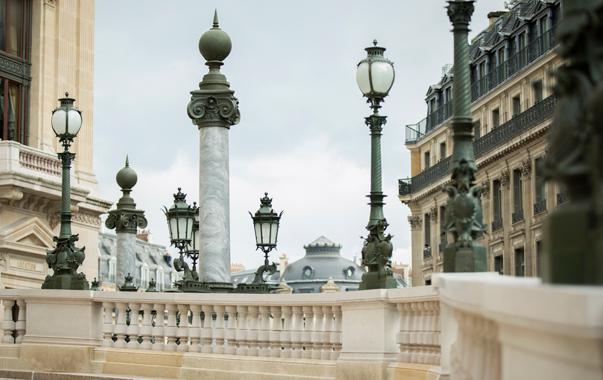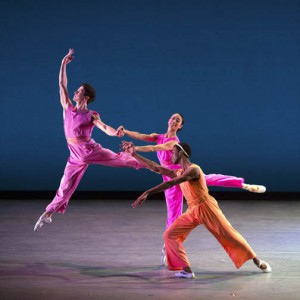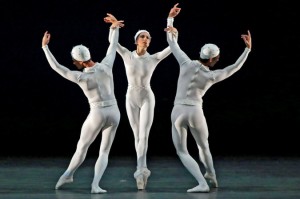By Brian Taylor Goldstein, Esq.
As the U.S. Legal Advisor to the International Artist Managers’ Association (IAMA), I’ve been asked to prepare an update on a variety of current issues involving international touring at the next membership meeting in London on November 27, 2015. Not only do I adore IAMA, but as this would provide a lovely excuse for my wife and I to avoid having to spend Thanksgiving with either of our families, I was more than happy to agree. Robyn Guilliams and prepared this report, I thought I would share it with all of you…
Visa Stercus
1. USCIS is presently taking a minimum of 8 – 10 weeks to process visa petitions at both the Vermont and California Service Centers. This means that, as of today, if you need to have an artist enter the U.S. any earlier than March 2016, you need to pay the additional $1225 for premium processing. (The official visa processing times that USCIS posts on its website have always been purely propaganda and should always be disregarded as such.)
- As a reminder, visa petitions can be filed up to one year in advance of the performance date.
2. For those of you who have Canadian musicians eligible for P-2 visas, we are receiving reports that Canadian AFM is experiencing a backlog in preparing filing petitions. This is in addition to the current USCIS processing time of 8 – 10 weeks.
3. I’ve said this before, but the message not getting through, so its worth repeating. ARTISTS CANNOT DO ANYTHING IN THE U.S. ON A TOURIST VISA OR ESTA (Visa waiver) STATUS!! Please stop listening to the colleges, universities, and festivals that tell you otherwise. They have nothing to lose other than perhaps having to find a replacement artist. On the other hand, I have recently learned of two artists—one from Germany and the other from Spain—who have had their ESTA status permanently revoked because they tried to enter the U.S. in ESTA status to perform in the U.S. Both artists had entered multiple times in the past and one were merely entering to “perform” a master class.
- It doesn’t matter whether an artist is paid or unpaid, whether the concert is free, or whether the performance is for educational purposes. They must have an appropriate visa—most often an O or P visa. United States Immigration Officers are taking this very seriously.
4. In preparing visa petitions, please start collecting and providing the evidence USCIS wants as opposed to giving them what you have lying around in your press package. The days of being able to supply a bio and a few press articles are long gone and we are seeing more and more visa denials and delays because of this.
- I recently, and with much regret and sadness, had to advise a client to re-cast a role because the artist’s European management was simply refusing to cooperate in our efforts to obtain a visa for the artist. (In case that manager is reading this…no, USCIS will not “just google the artist to find out how famous he is!”)
Tax Stercus
1. For those of you waiting to receive a refund check from the Internal Revenue Service (IRS) for a non-U.S. artist who has had 30% withheld from their gross engagements fees and are due a tax refund, please be advised: the check is NOT in the mail, and won’t be for the foreseeable future. The IRS has added an extra layer of scrutiny to nonresident tax returns involving refunds. Aside from the usual 2 to 3 month processing time, there is a second review to be sure that everything on the 1042-S form is accurate and complete. If the IRS senses ANYTHING off, the taxpayer will receive a letter asking for more info. To be fair, the IRS has announced that it will be paying interest on all overdue refund checks. To be practical, it doesn’t matter how much interest they offer to pay if, in fact, they never issue the refund.
- Bottom Line: There is currently a very good chance that if 30% is withheld from an artist’s engagement fee, the artist will not get that money back…or, at least, not for the foreseeable future. Please plan cash flow accordingly.
2. A Central Withholding Agreement (CWA) is still the best way of avoiding or reducing the mandatory 30% withholding required from all engagement fees for non-U.S. artists. To be eligible for a CWA, among other requirements, an artist must have filed a U.S. tax return for each prior year in which they have ever performed in the U.S.– even where no tax was owned. If an artist has not filed past U.S. tax returns, he or she will be required to file them as a prerequisite to obtaining a CWA. Unfortunately, we are seeing a sharp increase in the instances where filing such past tax returns is triggering an IRS audit in which they are requesting documents and records from the artist’s world-wide income.
- In this one particular area, the IRS has displayed a remarkable degree of efficiency in identifying artists who have simultaneously made the least amount of money and kept the least amount of records to prove it.
3. Obtaining Social Security Numbers (SSNs) and Individual Tax Payer Identification Numbers (ITINs) continue to be a challenge. While SSSs are not any easier for an artist to obtain, they have not become harder. ITINs, on the other hand, have become increasingly difficult, if not impossible, to get. Despite both staffing and budget cutbacks, the IRS has been requested to scrutinize ITIN requests more closely—particularly with regard to proof of identity. For most non-US residents, the most obvious and best proof of identity is a copy of their passport. However, the IRS lacks the resources and training to evaluate how to tell legitimate passports from forged ones. As a result, the IRS is now only accepting copies of passports that have been certified by the actual agency that issued the passport. However, even when this is provided, we are seeing the IRS send notices requesting that the actual, physical passport be sent to them instead. DO NOT DO THIS! You will never see that passport again!
- There IS one option for some Europeans: There are IRS offices located in the U.S. Consulates in Paris and London. One can go to these offices and request an ITIN in person (with an original passport, which the IRS will review and return on the spot.) HOWEVER – one can obtain an ITIN only if one has an “immediate tax need”, such as filing a return. So, if requesting an ITIN in the Paris or London Consulates, one must also bring a completed tax return in hand, ready to file.
4. We are seeing a large number of U.S. presenters–especially those based at colleges and universities—insisting that non-U.S. artists are legally required to have either a SSN or ITIN in order to perform or get paid in the U.S. Please be advised: There is no such law! While such numbers may make book keeping and accounting easier for the presenter, there is no law that requires an artist to have either one. Not only are SSNs and ITINs not proof of work authorization, but as we addressed above, many artists will be unable to get them in advance—if ever.
5. Canada requires 15% withholding for gross engagement fees of non-Canadian performers performing there (similar to the 30% withholding requirement in the U,S.) Canada Revenue allows performers to file a waiver/reduction request to reduce/waive the withholding (an R-105 request). On their website, Canada Revenue indicates that the deadline for filing such a request is 30 days prior to the first payment due. However, it’s taking them MUCH longer to process the requests. So, we are recommending that you file your request with them AT LEAST 60 days prior, or earlier, if possible.
General Travel Stercus
1. There is nothing new to report with regard to the ban on bringing musical instruments into the U.S. that contain ivory or other protected materials. United States Customs and Border Patrol isn’t strictly enforcing this with any degree of regularity. However, if any orchestras are touring and don’t want to take the risk, we are recommending that they contact Heather Noonan (hnoonan@americanorchestras.org) at the League of American Orchestras (http://americanorchestras.org) who is among the leading and most effective legislative arts advocates in the U.S. and is happy to talk to them about the “Instrument Passport” process.
- The League and others are continuing to lobby for specific amendments, including exemptions to the rules for “personal effects” (which would include carry-on musical instruments).
2. There has been some recent concern about Amtrak, the U.S.’s ersatz rail service, implementing a new policy requiring additional seats to be purchased for oversize musical instruments which cannot fit into overhead compartments. To date, this policy has been posted, but not enforced. We are recommending that artists and ensembles that intend to use Amtrak to travel to engagements within the U.S. check with an Amtrak representative in advance of the tour…and then be prepared for whatever they are told in advance to then be either incorrect or disputed by Amtrak at the actual time of travel.
Other Stercus
1. When negotiating fees for U.S. engagements, please remember to specify the currency in which the artist is to be paid, including exactly how and when the exchange rate is to be calculated. We are seeing an increased number of misunderstandings over this point.
- At the same time, use this as an opportunity to clarify any other costs or deductions (such as taxes, visas costs, hotel, travel, etc.) which either are or are not to be included as part of the engagement fee.
2. Too many people are still relying on general, vague, boilerplate, or unspecific contractual language to take the place of actual negotiation. Do not rely on the misguided belief that there are standard legal terms and procedures that magically govern engagements and bookings when words fail. If you want something, or don’t want something, say something—or, preferably, write it down.
3. When dealing with performances of new works or contemporary music, bear in mind that licensing laws differ. What’s in the public domain in Europe may not be in the United States. Even a re-arrangement or re-orchestration may not be permissible in certain countries.
__________________________________________________________________
For additional information and resources on this and other legal, project management, and business issues for the performing arts, visit ggartslaw.com
legal, project management, and business issues for the performing arts, visit ggartslaw.com
To ask your own question, write to lawanddisorder@musicalamerica.com
All questions on any topic related to legal, management, and business issues will be welcome. However, please post only general questions or hypotheticals. GG Arts Law reserves the right to alter, edit or, amend questions to focus on specific issues or to avoid names, circumstances, or any information that could be used to identify or embarrass a specific individual or organization. All questions will be posted anonymously and/or posthumously.
__________________________________________________________________
THE OFFICIAL DISCLAIMER:
THIS IS NOT LEGAL ADVICE!
The purpose of this blog is to provide general advice and guidance, not legal advice. Please consult with an attorney familiar with your specific circumstances, facts, challenges, medications, psychiatric disorders, past-lives, karmic debt, and anything else that may impact your situation before drawing any conclusions, deciding upon a course of action, sending a nasty email, filing a lawsuit, or doing anything rash!






Maestro, 62, Outruns Players
Sunday, November 22nd, 2015By ANDREW POWELL
Published: November 22, 2015
MUNICH — At five o’clock last Sunday afternoon, Munich time, three Mariinsky Orchestras began to play. Two of them launched into Pikovaya dama and Die Zauberflöte at the Mariinsky complex in St Petersburg. The third, here at the Gasteig, opened the accompaniment to a witty Shchedrin vocalise. Such are the possibilities with a roster of 335 musicians, the world’s largest. At the concert, though, the Mariinsky name was bizarrely buried. “MPhil 360°,” screamed the program book cover, “das Festival der Münchner Philharmoniker,” nowhere mentioning the Russian orchestra. The missing credit no doubt mattered less to Valery Gergiev, who now helms both orchestras (or all four, depending on how you count), than the furthering of his new goals: to better relate the Munich Philharmonic to citizens of all walks of life and to programmatically “bridge … German and Russian orchestra culture.” And in this the first MPhil 360° went far, as a lobby- and hall-based three-day jamboree with interviews and attractively priced music in varied formats. Indeed Gergiev himself went far, conducting as festival climax on Sunday five hour-long, off-subscription concerts centered on the Prokofiev piano concertos. Nine hands of Herbert Schuch, Denis Matsuev, Behzod Abduraimov (pictured), Alexei Volodin and Olli Mustonen partnered him at 11, 1, 3, 5 and 7 o’clock, respectively, while scores by Haydn, Mozart, Weber, Reger, the Munich composers Hartmann and Widmann, besides the Munich-based Shchedrin, offered mostly pertinent, mostly Germanic counterforce.
Fortunately for the MPhil’s amenable Intendant, Paul Müller, the extravagant project, at least Sunday’s marathon part of it, proved a logistical and artistic success, even if attendance hovered at 50% of the Gasteig’s capacity. It may or may not have been smart to let the Russians do 60% of the work — assigning them the first two concerts in addition to the five o’clock and leaving less than two hours of music to the day’s titular heroes — but orchestral standards held up throughout as numerous manned Medici TV cameras rolled. As if conducting 300 minutes of music was not enough, Gergiev amiably stood through solo encores and was available for interview during the intermissions. Not incidentally, he dedicated all the concerts to victims of the Islamist murders in Paris.
Hearing five pianists emphasized the disparity of the concertos. The scoring of the compact D-flat-Major work (1912) favors the orchestra, which was dazzlingly unchecked in this performance so that Schuch’s fleet playing could not consistently be heard. Volodin’s sparkle and linear integrity in the left-hand Fourth Concerto (1931) could not overcome the perception, in context, of a drop in creativity in the writing; the pianist more fully advertised himself with a blistering account of the Precipitato from Prokofiev’s Sonata No. 7. Mustonen presented the first three movements of the madly insistent Fifth Concerto (1932) as a unit, with its Toccata a backstop on essentially percussive ideas. But he attempted a round open sound for many figures, quite divergent from, say, Ciani or Béroff. His Larghetto and Vivo offered unforced contrast.
The concertos from 1921 and 1923 fared best. Although Abduraimov’s light touch demanded cupped hands to the ears, he breezed fluently through Concerto No. 3, finding playfulness in its angularity, nonchalance in its lyricism. His reading had a crystalline quality underpinned by decisive, shapely phrasing in the left hand, qualities that rendered uncommon detail in the Variations. To the G-Minor Second Concerto, summit of Prokofiev’s work in this form, Matsuev brought power and evident consideration of its 32-minute arc. Robust rhythms, neatly accented quiet passages, a frame to justly billet the big cadenza, flashes of droll humor in the Intermezzo — and the pianist barely glanced at Gergiev, who took his cues where he could. As encore came Rachmaninoff’s picture etude The Sea and the Gulls, equally intense and played with command of the long line.
If support from the podium in the concertos wasn’t always sensitive, repertory choices elsewhere mostly played to Gergiev’s strengths. The day got off to an alert start with a technically fine performance of Prokofiev’s First Symphony (1917) from the Mariinsky Orchestra. Next came a real Classical symphony, Haydn’s Bear (1786), but this lacked elegance and, consequently, expressiveness. Weber’s Romanticism bookended the second concert and concerto. His Freischütz Overture (1821) benefitted from the maestro’s energy shots at vital moments; the 1841 Berlioz arrangement of his Invitation to the Dance shimmered transparently.
When the MPhil showed up at three o’clock, a closer rapport was apparent between conductor and players (versus two years ago). Reger’s harmonically alluring Vier Tondichtungen nach Böcklin (1913) showcased first the strings (in an Elgarian picture with chances for the concertmaster), then the refined winds, next the whole orchestra (in the duly macabre third tone poem, Die Toteninsel), and finally Munich’s percussion section (in an exuberant bacchanal colorfully scored).
Two hours later the Mariinsky musicians were back, still on superb form, for that vocalise, the episodic and folksy Tanya-Katya (2002) with creamy-toned lyric soprano Pelageya Kurennaya; Hartmann’s Suite from Simplicius Simplicissimus, assembled in 1957 from the revised version of his 1935 opera, in a lively, at times jazzy mix of styles relished especially by the principal trombone; the concerto with Volodin; and, wrapping up a long haul for them, Naughty Limericks, the gaudy 1963 Shchedrin piece, which poorly followed the Prokofiev but was loudly applauded in the presence of the elderly composer, a friend of Gergiev’s. The MPhil’s second concert began with Jörg Widmann’s raucous concert overture Con brio (2008), again unhelpfully programmed with Prokofiev. The composer-clarinetist then played, or rather milked, Mozart’s A-Major Concerto, K622, jumping about the stage like an excited six-year-old, before Mustonen walked on to conclude this engrossing, unrepeatable venture.
Photo © Andrea Huber
Related posts:
Salzburg Coda
Stravinsky On Autopilot
Manon, Let’s Go
Gergiev Undissuaded
Time for Schwetzingen
Tags:Alexei Volodin, Aufforderung zum Tanz, Behzod Abduraimov, Commentary, Denis Matsuev, Gasteig, Hartmann, Haydn, Herbert Schuch, Jörg Widmann, Mariinsky Orchestra, Mariinsky Theater, München, Münchner Philharmoniker, Munich, Munich Philharmonic, Naughty Limericks, Olli Mustonen, Pelageya Kurennaya, Prokofiev, Rachmaninoff, Reger, Review, Shchedrin, Valery Gergiev, Vier Tondichtungen nach Böcklin, Weber, Wolfgang Amadeus Mozart
Posted in Munich Times | Comments Closed